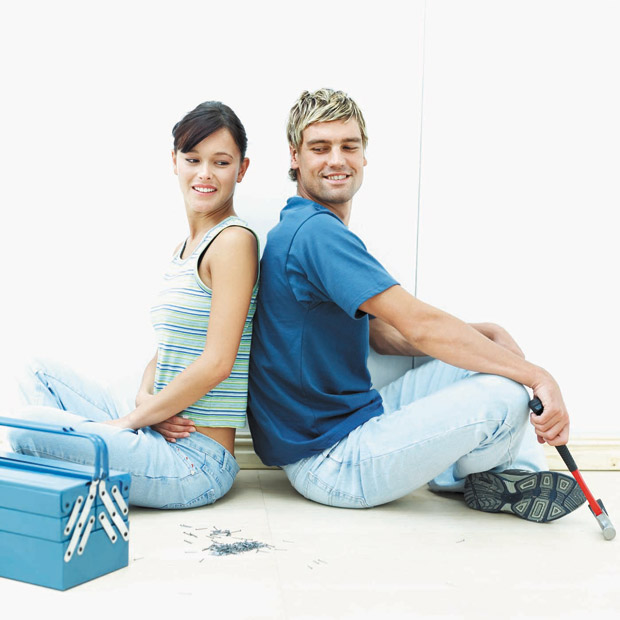Shedding light on the outdoor shed
 More than a decade ago, while my husband Scott and I were “just dating,” we introduced his little brother to my little cousin. The two hit it off and began dating. They went their separate ways during college, but a few years ago, they bumped into each other at a local park. This past summer, Scott and I served as the best man and matron of honor at their wedding.
More than a decade ago, while my husband Scott and I were “just dating,” we introduced his little brother to my little cousin. The two hit it off and began dating. They went their separate ways during college, but a few years ago, they bumped into each other at a local park. This past summer, Scott and I served as the best man and matron of honor at their wedding.
Newlyweds and new homeowners, they have also taken on several DIY projects. Last month, I told you about their glass tile bathroom floor. For their latest project, they enlisted the help of our brother-in-law, Eric, to build an outdoor shed. Eric has built them in the past and so has become somewhat of an expert. Here are some of their musts if you want to install an outdoor shed in your own yard:
First, look into whether you may need any special permits. If you do, get them before you start. Homeowners associations or city codes may have special restrictions as to where you can place your shed and how big it can be.

Choose a good location. Pick a spot that is as close to level as possible. It should also be in an area that doesn’t collect water. If your perfect place also happens to reside above plumbing or electrical, you may want to use brick or wood for the foundation. That way, you can get under there in the future, if needed.
Decide on shed size and match it to the location you have chosen. Remember when choosing a shed that you will need room for installation. Give yourself at least 3 feet of clearance around the perimeter of the shed. Take the time to create a sturdy stage for the shed to sit on. It will make all the difference in making everything strong and level later.

Follow the manufacturer instructions line by line. Do not rely on measurements of the shed alone. The instructions may require you to build a larger foundation than the shed’s floor area.
Plan on filling in the gaps. Use caulk and/or foam filler to seal the gaps around the shed, such as those between walls and at the roof. Otherwise, unwanted things can get in — from insects and rodents to rain and salty air. Consult a professional if you are uncomfortable in any way.
Have a question or comment for Joanne? Email her at thefixisinhawaii@gmail.com.